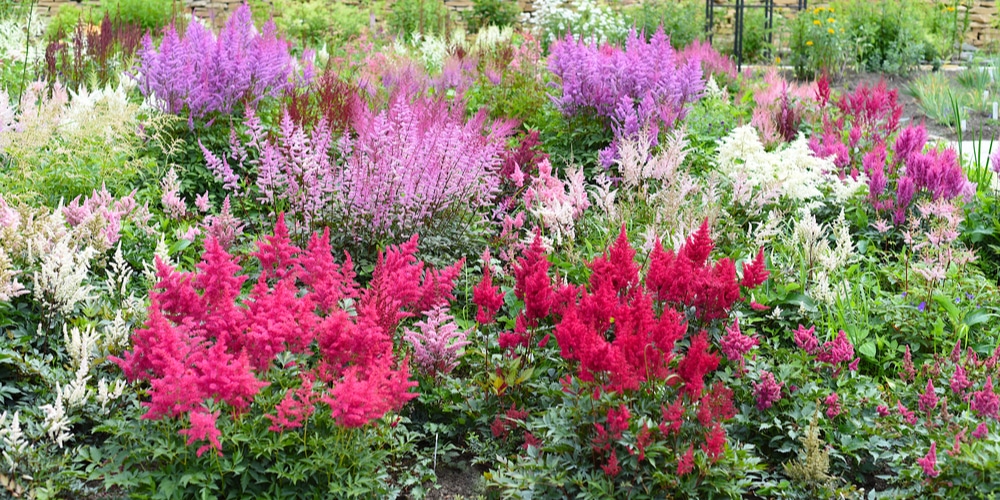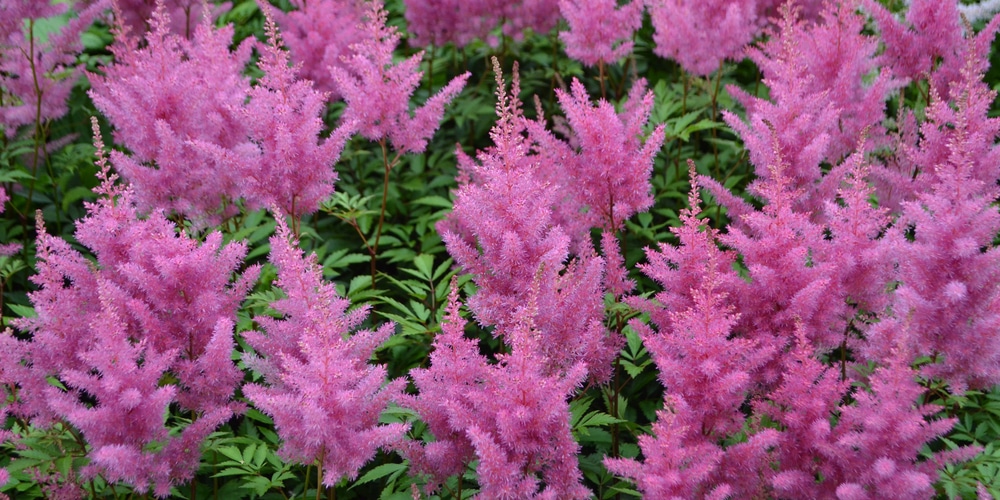Astilbe (Astilbe spp.) has showy flowers on top of glossy, fern-like foliage. The Astilbe has white to deep burgundy blooms that bloom from early summer until late fall, illuminating dark areas. But are astilbe annual or perennial?
Astilbe plants range in height from 1 to 4 feet tall. This simple-to-raise flower is drought-tolerant and low-maintenance across the country. Here’s how to grow and care for Astilbe in your garden.
Astilbe Annual Or Perennial
Astilbe is a perennial plant that is often used in gardens and landscaping. It is known for its showy plumes of flowers, which can be pink, white, or purple. Astilbes are relatively easy to care for, and they will bloom for several weeks in the summertime.
Because of their long blooming season, astilbes are a great plant to use as fillers in flower beds. They also make good-cut flowers. When cutting astilbes for bouquets, leave some of the leaves on the stems so the plant can continue to photosynthesize.
The Astilbe
Though they may appear fragile, astilbes are quite resilient plants. They’re perfect for gardeners in colder climates, as they can tolerate temperatures as low as -20 degrees Fahrenheit.
Additionally, they prefer moisture and semi-shade, making them ideal for shady areas of the garden that tend to stay moist. Astilbes come in various colors and bloom from late spring to late summer (or even fall), making them a beautiful addition to any garden.
And because they require relatively little care, astilbes are perfect for both experienced gardeners and beginners. So if you’re looking for a stunning, low-maintenance plant to add to your garden, consider Astilbe. You won’t be disappointed.
Planting Guidelines
Astilbes are best planted in the spring or fall. If you live in a cold climate, it’s best to plant astilbes in the spring, so they have time to establish themselves before winter sets in. However, astilbes can be planted in spring or fall in warmer climates.
When planting astilbes, choose a location with moist, well-drained soil and partial shade. Astilbes will tolerate full sun in cooler climates, but they’ll need protection from the hot afternoon sun in warmer areas.
After choosing a location:
- Dig a hole twice as wide as the Astilbe’s root ball and just as deep.
- Gently loosen the roots of the Astilbe and place it in the hole, ensuring that the plant is at the same level it was growing at before.
- Once the Astilbe is in place, backfill the hole with soil and water.
Astilbes need to be watered regularly during their first growing season to ensure that they become established.
Caring for Astilbes
Once your astilbes are planted, there’s not much you need to do in terms of care. These tough plants are relatively drought-tolerant and don’t require a lot of fertilization. Too much fertilizer can harm astilbes by causing the foliage to become lush and green but preventing the plant from blooming.
If you fertilize your astilbes, use a balanced fertilizer that is low in nitrogen. Apply the fertilizer in early spring before new growth begins. Once the astilbes are done blooming, cut the flower stalks back to about six inches above ground level. This will help keep the plants tidy and encourage them to produce new flowers the following year.
Pests and Diseases
Astilbes are generally quite resistant to pests and diseases, but a few problems can occur. Aphids, spider mites, and scale insects may attack astilbes, causing the foliage to turn yellow or brown. If you notice any of these pests on your plant, treat it with a pesticide or insecticide.
Astilbes may also suffer from powdery mildew, leaf spot, or crown rot. These problems are usually caused by too much moisture or poor air circulation. To prevent these diseases, water astilbes at the base of the plant and ensure that the plants have plenty of space to breathe.
Can It Survive Winter
Astilbe is a tough flowering perennial that is hardy from USDA zones 3 through 9. This means that it can survive the winter in even very harsh climates.
Astilbe is a relatively low-maintenance plant that will bloom for several weeks each summer. Deadheading the spent flowers will encourage the plant to produce more blooms. Astilbe is an ideal choice for gardeners looking for a tough plant that will provide color and interest for many years to come.
Astilbe annual or perennial: Conclusion
With a bit of care, astilbes will thrive in any garden. These beautiful plants are easy to grow and make a stunning addition to any flower bed or bouquet. So if you’re looking for a low-maintenance plant that will add some pizzazz to your garden.
Related Article: Astilbe Companion Plants


